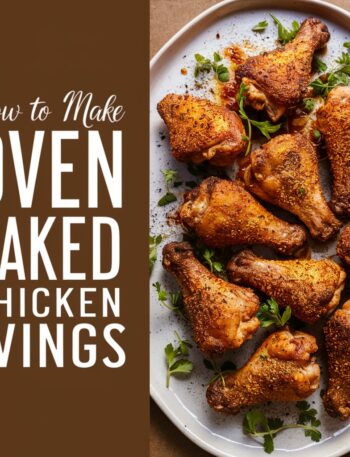Red Velvet Cupcakes Recipe – History, Tips, and the Ultimate Guide
Red velvet cupcakes are more than just a dessert—they’re a timeless symbol of elegance, celebration, and indulgence. With their striking crimson color, subtle cocoa notes, and luscious cream cheese frosting, these cupcakes have secured their place as one of the most beloved treats worldwide. Whether you’re baking them for Valentine’s Day, a wedding, a birthday party, or simply to satisfy your sweet tooth, red velvet cupcakes always make an impression.
But what makes these cupcakes so iconic? Why do they have such a fascinating history, and how can you ensure your homemade version tastes just as perfect as those from a professional bakery? This complete guide will explore everything you need to know—from origins and essential ingredients to baking techniques, storage tips, creative variations, and expert troubleshooting. By the end, you’ll not only master the recipe but also understand the artistry behind it.
The Fascinating History of Red Velvet Cupcakes
The origins of red velvet cake—and, by extension, cupcakes—can be traced back to the early 20th century in the United States. The “velvet” descriptor was used in the Victorian era to highlight cakes with a softer, finer crumb compared to the coarse sponge cakes of the time. Cocoa powder was incorporated into some recipes to soften flour proteins, creating that signature smooth texture.
The red hue originally came not from food coloring but from a chemical reaction. Natural cocoa contained anthocyanins, which, when mixed with acidic ingredients like buttermilk and vinegar, produced a reddish tint. Later, during the Great Depression, food coloring companies—most notably Adams Extract in Texas—popularized the bright red version we know today as a marketing strategy.
Cupcakes, smaller and more personal than cakes, rose in popularity in the mid-20th century. When bakers began adapting red velvet cake into cupcake form, the treat became a perfect combination of visual beauty and portion convenience. Today, red velvet cupcakes remain a popular choice for both casual baking and formal occasions.
Why Red Velvet Cupcakes Are Special
Unlike chocolate cupcakes, red velvet offers a subtle cocoa flavor balanced by tangy buttermilk and cream cheese frosting. The color adds drama, while the texture is luxuriously soft and moist. The balance of flavors—sweet, tangy, and lightly chocolaty—is what sets them apart from other desserts.
They’re also incredibly versatile. Red velvet cupcakes can be dressed up with elaborate decorations for weddings or kept simple with a swirl of frosting for everyday enjoyment. Their striking look ensures they never go unnoticed on a dessert table.
Essential Ingredients for the Perfect Red Velvet Cupcake
Every ingredient in a red velvet cupcake serves a purpose. Understanding the role of each will help you create bakery-quality results at home.
Cupcake Ingredients
- All-Purpose Flour – Provides structure. Sift for a lighter crumb.
- Granulated Sugar – Sweetens and helps retain moisture.
- Unsweetened Cocoa Powder – Adds a light chocolate flavor without overpowering.
- Baking Soda + Vinegar – The classic leavening combination that ensures a soft rise.
- Vegetable Oil – Keeps cupcakes moist and tender for longer shelf life.
- Buttermilk – Adds tanginess and activates the leavening agents.
- Eggs – Bind ingredients while adding richness.
- Vanilla Extract – Deepens flavor.
- Red Food Coloring – Gives the signature vibrant red hue. Gel works best for boldness.
Frosting Ingredients
- Cream Cheese – Tangy and smooth, the heart of the frosting.
- Unsalted Butter – Adds structure and creaminess.
- Powdered Sugar – Sweetens and provides stability.
- Vanilla Extract – Enhances flavor balance.
- Pinch of Salt – Cuts through sweetness for perfect balance.
Step-by-Step Recipe for Red Velvet Cupcakes
Preparing the Cupcakes
- Preheat Oven – Set to 350°F (175°C). Line a muffin pan with cupcake liners.
- Mix Dry Ingredients – Sift together flour, cocoa powder, sugar, baking soda, and salt.
- Combine Wet Ingredients – In another bowl, whisk oil, buttermilk, egg, vanilla, and vinegar until smooth.
- Add Coloring – Stir in food coloring until the desired shade is achieved.
- Combine Mixtures – Slowly add wet ingredients to dry, mixing gently until smooth (avoid overmixing).
- Fill Liners – Spoon batter into liners, filling ⅔ full.
- Bake – Bake for 18–20 minutes or until a toothpick inserted comes out clean. Cool completely.
Making the Frosting
- Beat softened butter and cream cheese until creamy.
- Add powdered sugar gradually, beating until fluffy.
- Mix in vanilla and a pinch of salt.
- Pipe or spread onto cooled cupcakes.
Expert Tips for Success
- Room Temperature Ingredients: Ensures smooth mixing and consistent texture.
- Don’t Overmix: Overmixing toughens cupcakes. Stop once combined.
- Use Gel Food Coloring: Provides deeper color without thinning the batter.
- Check for Doneness Early: Overbaking dries cupcakes. Test at 18 minutes.
- Chill Frosting Slightly: Makes piping easier and more professional-looking.
Common Problems & Fixes

- Cupcakes too dense → Batter was overmixed. Mix gently.
- Cupcakes dry → Overbaked or too much flour. Measure accurately.
- Frosting runny → Cream cheese too soft. Chill before whipping.
- Color not vibrant → Use gel coloring instead of liquid.
Creative Variations
- Stuffed Cupcakes: Fill with chocolate ganache, cream cheese, or raspberry jam.
- Mini Red Velvet Cupcakes: Perfect for parties and bite-sized indulgence.
- Vegan Option: Use almond milk + vinegar instead of buttermilk, and vegan cream cheese.
- Holiday Twist: Decorate with green sprinkles for Christmas or heart sprinkles for Valentine’s Day.
Serving Suggestions
- Pair with a glass of cold milk, hot coffee, or a latte.
- Serve as part of a dessert platter with chocolate-dipped strawberries.
- Use as a centerpiece at birthdays, anniversaries, and weddings.
Nutritional Information (Per Cupcake with Frosting)
- Calories: ~320
- Carbohydrates: 42g
- Protein: 3g
- Fat: 16g
- Sugar: 31g
- Fiber: 1g
(Values vary by ingredient brands and portion sizes.)
Storage & Make-Ahead Tips
- Store unfrosted cupcakes in an airtight container at room temperature for 2 days.
- Frosted cupcakes should be refrigerated for up to 5 days. Bring to room temp before serving.
- Freeze unfrosted cupcakes for up to 2 months. Thaw overnight in the fridge.
Frequently Asked Questions

1. Can I make red velvet cupcakes without food coloring?
Yes, natural alternatives like beetroot powder or pomegranate juice can add a reddish hue.
2. Why do red velvet cupcakes use vinegar and buttermilk?
They enhance the cake’s texture and tang while helping the cocoa develop a reddish tone.
3. Can I use Dutch-process cocoa instead of natural?
It’s not recommended since Dutch-process cocoa is less acidic, affecting both color and rise.
4. How do I make these cupcakes gluten-free?
Replace flour with a gluten-free baking blend. Results may be slightly denser.
5. Can I prepare the frosting ahead of time?
Yes, cream cheese frosting can be made 2–3 days in advance and stored in the fridge.
6. Why are my cupcakes brown instead of red?
Either too little food coloring was used, or Dutch-process cocoa neutralized the acidity.
Final Thoughts
Red velvet cupcakes are proof that baking is both science and art. With their luxurious texture, balanced flavors, and stunning appearance, they never fail to impress. By following this guide, you’ll not only bake perfect cupcakes but also gain the confidence to experiment with variations and decorations. Whether for holidays, special events, or simple everyday indulgence, red velvet cupcakes are a dessert that deserves a permanent spot in your baking repertoire.





